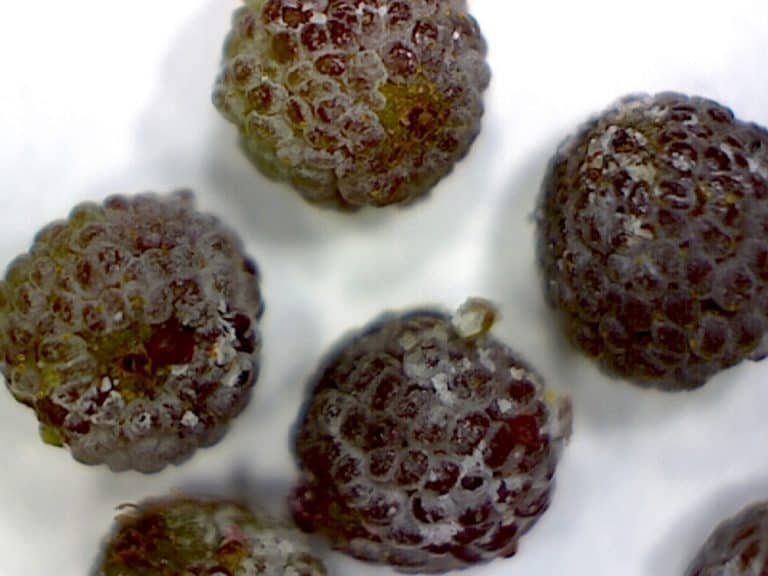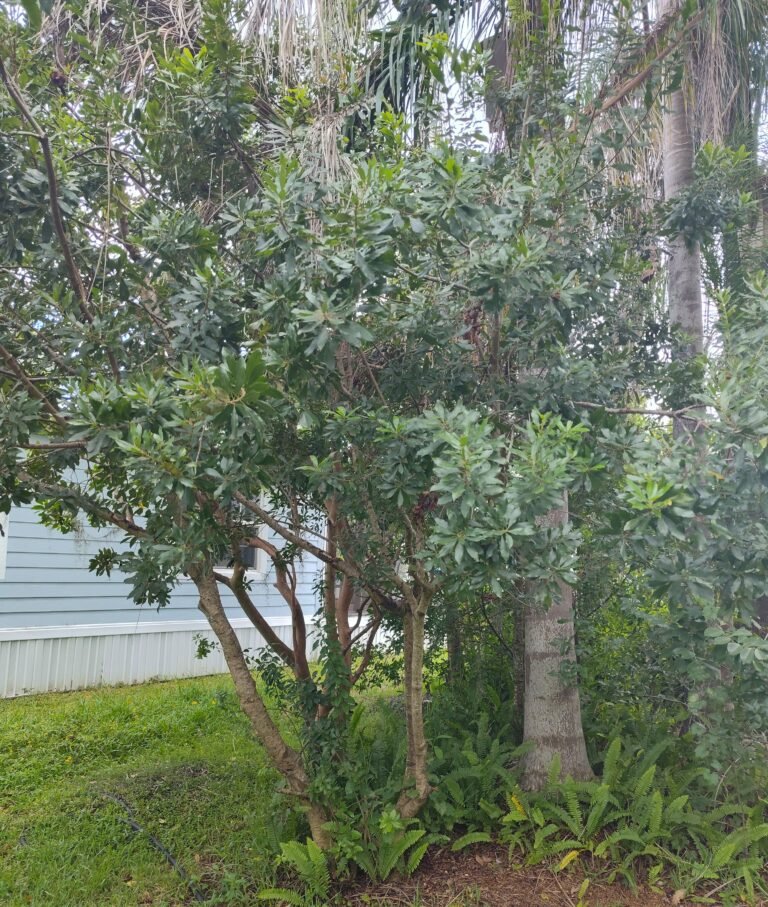Morella cerifera
(Wax Myrtle)

Common Names, Latin Name and Family
Its common names are wax myrtle, bayberry, southern wax myrtle, southern bayberry, eastern bayberry, candleberry, and tallow shrub.
Its Latin name is Morella cerifera.
It is in the Myricaceae or bayberry family.
Form
Wax myrtle is an aromatic, dioecious, evergreen shrub that can reach 25 feet in height at maturity.
It commonly produces multiple trunks and sends out runners that produce new plants. It is clonal forming and produces thickets.
The national champion is in Bradenton, Florida and has a 3 foot trunk circumference, is 28 feet in height and has a 33 foot spread.
A dwarf form is often seen at landscape nurseries, but there is some controversy as to whether or not the dwarf wax myrtle, M. cerifera var. pumila, is truly a distinct and separate species.

Leaves
Its leaves are alternate, simple, narrowly oblanceolate and toothed at the apices (tips).
They are aromatic when crushed.

Flowers
Its flowers are in the form of catkins that are born in the leaf axils. The catkins are approximately 3/4 inch long and appear in early spring.
Male and female flowers are found on separate plants (dioecious) so only female plants produce fruit.
The flowers appear in great profusion and attract many insects which in turn attract many birds, especially winter warblers.

Fruit
The fruit is a small, round, waxy berry (actually a drupe) that is approximately 1/8 of an inch in size.
The berries are eaten by a wide variety of birds. Early colonists used the berries to make scented candles. The berries were boiled in water and the wax skimmed from the surface. Another common name that may be familiar is bayberry.


Habitat
Wax myrtle can be found growing in a wide variety of habitats throughout Florida including coastal areas, pine savannahs, cypress swamps, wet hammocks, bogs, upland hammocks, old fields, and fence rows.
Native Range
It is native throughout the entire state of Florida and north to New Jersey, west to Oklahoma and east to Texas.
It is native to the following states: AL, AR, DE, FL, GA, HI, LA, MD, MS, NC, NJ, OK, SC, TX, VA, and WV.
It is also found in the West Indies, Mexico and Central America.
Landscape Use
Its ability to thrive in an array of habitats makes it an excellent landscape plant.
It will tolerate wet to dry soils and salt spray.
Depending upon how it is pruned it can be either a hedge plant or specimen.
The trunks can be pruned of lower branches creating a multi trunked tree, or you can pruned it back each year to produce more abundant lower foliage for a dense hedge.
When grown in too much shade it can get very leggy and leaning.

Wildlife Use
The flowers provide nectar for small pollinators and the waxy fruit is eaten by a variety of songbirds.
The dense, evergreen, foliage makes wonderful forage and nesting areas for birds, and larger birds such as ducks may nest at the base of the plants.
Human Use
Medicinally the leaves have been used to treat a variety of ailments such as stomach ulcers, skin ulcers, and colds.
A gargle made from the leaves and bark is said to relieve a sore throat.
Leaves may also be used as a substitute for bay leaf in culinary recipes and crushed leaves rubbed on the skin are purported to repel insects
Propagation
Propagation is achieved through cuttings or seeds. Soaking the seeds in hot water or rubbing them on a rough surface helps to scarify the seed and remove the waxy coating. Stratification, or exposure to cold temperatures, is not required.
Cuttings should be taken from semi-hardwood in the early summer. Rooting hormone can be used, but the time of year for collecting the cuttings seems to be most important.
Root cuttings or removal of runners can be done throughout the year.
Keep an eye out for seedlings coming up in your yard compliments of the fruit eating birds.
Bibliography
Bit, Richard E. Growing & Propagating Showy Native Woody Plants. University of North Carolina Press: N.C. 1992
Godfrey, R.K., and J.W. Wooten. Trees, Shrubs, and Woody Vines of Northern Florida and Adjacent Georgia and Alabama. University of Georgia Press: Athens, GA. 1981
Hutchens, Alma R. Indian Herbology of North America. Shambhala: Boston. 1973
Nelson, Gil. The Shrubs & Woody Vines of Florida. Pineapple Press: Sarasota, FL 1996
Peterson, Lee A. Peterson Field Guides: Edible Plants. Houghton Mifflin: Boston 1977
Next Article: Wild Coffee
